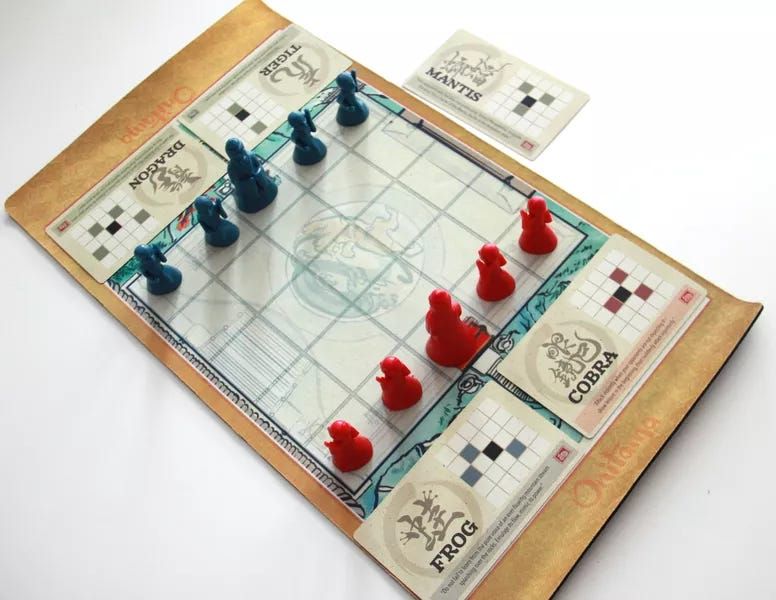so, what kind of (board) game is this?

for my first prototype I’m adapting a board game called Onitama, designed by Shimpei Sato.
it’s game based on chess, played on a 5x5 grid, with the exception that every playing piece abides to the same movement rules. but there’s a twist — their movement is defined by cards.
the game comes with:
- a playing mat
- 10 pawns - 2 masters and 8 students
- a deck of 16 (move) cards — from which we draw 5 to play [the 11 cards left are put back in the box, as they won’t be used in the game]
we then randomly give two cards to each player and leave the fifth card next to the board.
each card is unique and indicates which cells in the playing grid are valid for the pawn to move to, relative to its current position
in their turn each player will:
- choose which card of the two to use with any of their pawns.
- move the pawn to a valid cell, according to the selected card
- give away the used card away — placing it next to the board — and take the one that was there
after that it’s the other player’s turn to play and they shall do the same;
notice that, when it’s the second player’s turn to swap their used card by the one on the sideline, they will take the one previously given away by the other player
the game will end when either player accomplishes one of the following:
-
captures the opponent’s master pawn (checkmate)
-
moves their master pawn into the opponent’s master pawn starting position
after a few turns, you’ll realise there’s two games at play:
- the chess-like abstract movement and
- capture gameplay the card management
this leads to interesting dynamics and at times you’ll find yourself keeping a card on your side for several turns, only to prevent your opponent from making that devastating move.